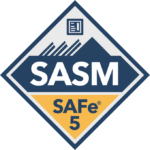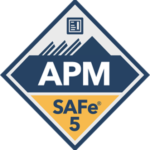Leading SAFe for Executives: Why It's Essential for Enterprise Success
Leading SAFe for Executives: Why It's Essential for Enterprise Success
Blog Article
SAFe Certification: Empowering Leaders in Scaled Agile Frameworks
The landscape of project monitoring is developing, and SAFe Accreditation stands as an essential aspect for leaders looking for to implement the Scaled Agile Structure effectively. This qualification gears up experts with essential skills to cultivate partnership and development within their groups, eventually improving business efficiency. Nevertheless, the journey to ending up being a licensed SAFe leader involves more than just acquiring understanding; it incorporates recognizing the nuanced functions and duties within agile settings. As we check out the intricacies of SAFe Qualification, the effects for management performance and business success warrant deeper assessment.
Comprehending SAFe Certification
SAFe accreditation, which stands for Scaled Agile Framework certification, is a credentialing program made to furnish professionals with the knowledge and skills needed to apply nimble techniques at scale within their organizations. The SAFe structure supplies an organized method that assists organizations align their teams and manage larger jobs effectively, making certain that active techniques are used consistently throughout different degrees.
The accreditation encompasses different functions, consisting of SAFe Agilist, SAFe Professional, and SAFe Program Specialist, each concentrating on different elements of the framework. The program highlights the significance of lean principles, constant shipment, and partnership among teams, fostering an environment for technology and performance.

Participants undertake strenuous training that integrates academic knowledge with functional application, enhancing their capability to lead dexterous makeovers. The curriculum includes topics such as agile groups, program implementation, and portfolio monitoring, ensuring that licensed experts are fluent in all aspects of the SAFe technique.
Advantages of SAFe Accreditation
Acquiring a SAFe accreditation uses various advantages for experts looking to enhance their jobs in dexterous job management. It furnishes people with an extensive understanding of the Scaled Agile Structure, enabling them to effectively implement active concepts throughout huge organizations. This knowledge is important as organizations progressively embrace nimble techniques to enhance productivity and flexibility.
Furthermore, SAFe qualification boosts a prospect's bankability and job potential customers. SAFe Lean Portfolio Management. As companies seek certified experts to lead their dexterous transformations, licensed individuals can command greater incomes and stick out in a competitive job market. Additionally, acquiring this accreditation shows a dedication to continuous knowing and professional advancement, which is extremely related to by companies.
Networking opportunities also occur from SAFe certification, attaching people with an area of similar experts and market leaders. This can result in understanding, partnership, and mentorship sharing, additional improving one's professional experience.
Lastly, accredited specialists are commonly much better furnished to promote a culture of collaboration and technology within their groups, driving successful outcomes in agile tasks. On the whole, the advantages of SAFe qualification are manifold, making it an important financial investment for those in the active task management domain name.
The Certification Process

Prospects are then encouraged to join a thorough training course, normally conducted by a licensed SAFe instructor. These programs cover essential principles, concepts, and techniques of the Scaled Agile Framework, offering participants with important insights and sensible knowledge.
Adhering to the training, prospects must pass a certification test to demonstrate their understanding and capability in using SAFe principles. The examinations are designed to assess not just understanding but likewise the ability to implement agile techniques properly within a scaled setting.
Once certified, individuals access to a riches of resources, including community networks and recurring knowing chances, which further enhance their nimble leadership capacities. Maintaining certification calls for constant professional development, guaranteeing that leaders remain existing with developing practices within the framework. Eventually, the certification procedure is an extensive yet gratifying path for those intending to master agile management.
Responsibilities and roles
Effective execution of the Scaled Agile Structure (SAFe) relies greatly on plainly defined roles and duties within a company. These roles are vital for guaranteeing positioning, performance, and efficient collaboration across groups.
At the group degree, vital duties include the Scrum Master, Item Owner, and Agile Team Members. The Scrum Master assists in the agile process, ensuring that the team follows the SAFe concepts while removing obstacles. The Item Proprietor is in charge of taking full advantage of the value of the item and taking care of the stockpile to align with company objectives. Agile Team Members contribute their specialized skills to deliver top notch increments.
At the program degree, the Launch Train Engineer (RTE) plays a vital role in helpful resources coordinating the SAFe For Architects Agile Release Train (ART), ensuring smooth program execution and positioning across numerous groups (SAFe DevOps certification). Additionally, the system designer and business proprietors offer technological advice and calculated vision, specifically
Continual Enhancement in SAFe
Continuous enhancement is a foundation of the Scaled Agile Structure (SAFe), driving organizations to improve their procedures, products, and general performance. By fostering a culture of constant enhancement, SAFe motivates groups to frequently evaluate their operations and end results, recognize inefficiencies, and apply approaches for enhancement. This repetitive procedure not just enhances productivity yet also lines up teams with the company's strategic purposes.
Central to this method are the Inspect and Adapt (I&A) workshops, which give organized possibilities for representation and knowing. During these sessions, teams assess performance metrics, go over challenges, and produce actionable insights to guide future iterations. In addition, using Agile Release Trains (ARTs) helps with cross-functional partnership, enabling groups to share finest methods and drive cumulative enhancement.
Additionally, Lean-Agile management plays a critical function in promoting a mindset of continuous renovation. Leaders are tasked with promoting an environment where experimentation is more encouraged, and failures are watched as learning possibilities. By installing constant improvement into the organizational culture, SAFe empowers groups to stay agile and receptive to changing market needs, ultimately boosting their ability to supply worth to clients.
Verdict
To conclude, SAFe Qualification functions as a crucial tool for leaders intending to execute agile methods effectively within their companies. By fostering a thorough understanding of the Scaled Agile Structure, this qualification improves development, collaboration, and task results. It opens up opportunities for professional development and networking among sector professionals, ensuring that qualified specialists remain experienced in navigating the intricacies of today's dynamic business landscape. Eventually, SAFe Certification adds substantially to organizational success and durability.
The landscape of job management is progressing, and SAFe Qualification stands as a critical aspect for leaders looking for to implement the Scaled Agile Framework properly.Obtaining a Risk-free qualification provides countless advantages for experts looking to boost their careers in nimble task management - SAFe DevOps certification. The Scrum Master facilitates the dexterous procedure, ensuring that the team sticks to the SAFe principles while eliminating impediments. By installing continual enhancement into the organizational society, SAFe empowers teams to continue to be dexterous and receptive to altering market needs, inevitably boosting their capability to deliver worth to consumers
In verdict, SAFe Qualification offers as an essential device for leaders intending to carry out dexterous techniques successfully within their companies.
Report this page